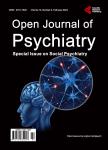The Cost-Effectiveness of Short-Term Psychodynamic Psychotherapy and Solution-Focused Therapy in the Treatment of Depressive and Anxiety Disorders during a Three-Year Follow-Up
短期心理治疗和解决方案为中心的治疗抑郁症和焦虑症的治疗过程中一项为期三年的后续成本效益作者机构:Social Insurance InstitutionHelsinkiFinland National Institute for Health and WelfareHelsinkiFinland Biomedicum HelsinkiHelsinkiFinland
出 版 物:《Open Journal of Psychiatry》 (精神病学期刊(英文))
年 卷 期:2014年第4卷第3期
页 面:238-250页
学科分类:1002[医学-临床医学] 100214[医学-肿瘤学] 10[医学]
基 金:The Academy of Finland (Grant No. 138876) the Social Insurance Institution of Finland
主 题:Depression Anxiety Psychotherapy Cost Analysis
摘 要:Background: Various psychotherapies are used extensively in treating different mental disorders, but still relatively little is known about the long-term health and cost effects of different therapies. The aim of this study is to compare the cost-effectiveness of short-term psychodynamic psychotherapy (SPP) and solution-focused therapy (SFT) in the treatment of depressive and anxiety disorders during a three-year follow-up. Methods: A total of 198 outpatients suffering from mood or anxiety disorder were randomized to SPP or SFT. Symptoms were assessed using the Beck Depression Inventory, the Hamilton Depression Rating Scale, the Symptom Check List Anxiety Scale, the Hamilton Anxiety Rating Scale, and the Symptom Check List Global Severity Index. Both direct and indirect costs due to mental health problems were measured. Results: The symptoms of depression and anxiety were reduced statistically significantly according to all 5 psychiatric outcome measures during the first 7 months, after which only minor changes were observed. The differences between the two groups were small and not statistically significant. The direct costs were about equal in both groups but the indirect costs were somewhat higher in the SPP group, although not statistically significantly. The costs of auxiliary treatments were much higher than the cost of SPP or SFT. Conclusions: With regard to cost-effectiveness, there is little difference between SPP and SFT.



